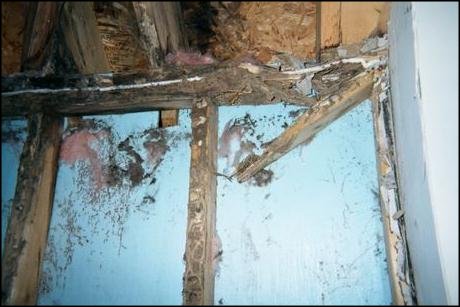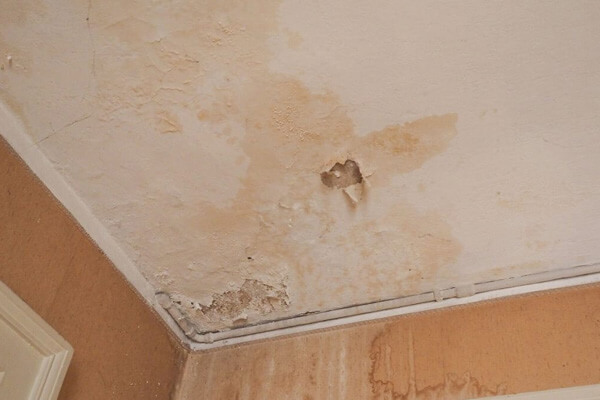Water Stains on Walls: Checking and Fixing Steps
Water Stains on Walls: Checking and Fixing Steps
Blog Article
How do you really feel with regards to Water Stains on Walls?

Water spots on walls are not pleasant to the eyes. Often it appears practically unpreventable to experience water discolorations on walls in homes.
Home owners living in moist regions continuously deal with the fear of water stains on walls. With well-rounded and also precise info on the causes of water discolorations and also timely repair work processes, you will certainly always be a step in advance of such events.
3 Typical Causes of Water Stains on Wall Surfaces
In contrast to popular belief, water discolorations on wall surfaces do not always originate from bad structure products. There are a number of causes of water stains on walls. These include:
Damp
When warm wet air meets with dry cold air, it triggers water droplets to base on the walls of structures. When there is heavy steam from food preparation or showers, this occurs in cooking areas and washrooms. The water beads can discolor the bordering walls in these parts of your home as well as infect other areas.
Moist or condensation affects the roofing and wall surfaces of buildings. This triggers them to show up darker than other locations of the residence. When the wall surface is wet, it produces an ideal environment for the growth of fungis and microorganisms. These might have unfavorable impacts on wellness, such as allergies as well as respiratory system disorders.
Poor Water drainage
When making a building plan, it is critical to guarantee ample drainage. This will stop water from seeping into the walls. Where the water drainage system is obstructed or nonexistent, underground wetness accumulates. This web links to excessive wetness that you discover on the walls of your building.
So, the leading source of damp walls, in this situation, can be an inadequate drain system. It can likewise result from bad administration of sewage pipes that run through the structure.
Pipeline Leaks
A lot of residences have a network of pipes within the wall surfaces. This guarantees that the pipes are faraway from the reach of devastating rodents. It constantly increases the practicality of such pipes, as there is little oxygen within the walls. This dissuades corrosion.
Yet, a downside to this is that water leakage influences the wall surfaces of the building and also creates extensive damage. An indicator of defective pipes is the appearance of a water stain on the wall.
Pro Tip
A houseplant in your home additionally increases its humidity. If the residence is already moist, you may desire to introduce houseplants with marginal transpiration. An instance of suitable houseplants is succulents.
Water Discolorations on Wall: Repair Service Tips
Homeowners would typically want a quick fix when taking care of water stains. They would certainly soon recognize this is disadvantageous as the water spots reoccur. So, right here are a few practical tips that will certainly lead you in the repair work of water discolorations on walls:
Conclusion
Although nobody intends to have water discolorations on walls in their home, it can occur to the very best people. This write-up offers you take advantage of, as you now understand exactly how to manage this incident if it does occur.
It is constantly best to hire professional services to help deal with the problems in your home.
Occasionally it seems virtually unpreventable to experience water stains on walls in houses.
In contrast to popular belief, water stains on walls do not always stem from poor building materials. There are a number of causes of water spots on walls. The water beads can discolor the bordering walls in these components of your residence as well as spread to other locations.
Here are a couple of useful tips that will assist you in the repair of water discolorations on walls:
How to identify and deal with water spots on walls and ceilings
Where is water coming from?
Where is the water coming from? Is the roof above it? Or how about a bathroom? Potentially a leaky pipe? Whatever is up, it’s wet. Repairs cannot be attempted until the source is identified and the necessary repairs made. Otherwise, repairs are moot. The water stain will just come back.
Many times the repair is simple. A common source is water seepage. A shower pan or piping that once had be caulked could have sprung loose causing a slowly leaking pipe. Address potential piping issues before proceeding.
If it’s the roof that’s up, check it for leaks. Roof water is not always attributed to a roof problem. Depending where in the country you are located, you could be looking at an ice dam, which means new insulation and repairs. Roofs can leak, shingles can slip. Again, the repairs must be made before any patch work can happen inside.
Why is there a water spot?
Water stain repairs always come last. Repairing a water stain inside your home before addressing the issue is going to lead to disappointment. Repairs will quickly be taken apart by a continuous leak. You will need to see how wet the area actually is. Potentially, you could be looking at taking out a piece of the ceiling or drywall to get down to a dry bones before moving forward. If you neglect this step, you are sure to have bleed through on the repair.
How to go about fixing the problem?
Clean.
Once the underlying cause of the stain is dealt with, you can begin by cleaning the stain with bleach. Mix one cup of bleach with three cups of warm water and wipe the wall down. This mixture will also remove any leftover mildew, dirt or dust that could prevent a good paint job. Rinse the solution off with a spray bottle and towel.
Prep.
Get a drop cloth set up on the floor below your project. If the mess is on a ceiling, protective gloves and goggles will be crucial. After the area is dry, tape off any areas, like trim, you want to keep paint-free.
Prime.
Use a good quality base coat of stain-blocking primer. Your ceiling is probably painted with an interior latex paint, meaning it is water soluble. Water will destroy this kind of paint and cause lingering issues with your job. The base coat will block this from happening again in the future.
Paint.
After ample drying time, apply at least two coats of ceiling paint, with drying time in between. Oil-based ceiling paints will contain more volatile organic compounds (VOCs) and fumes, so take precautions not to expose yourself to this paint for too long.
Your ceiling should look pristine a new. Provided the problem has been completely solved, there will be no returning halo in your paint job.

We had been introduced to that article about Indicators of Water Damage Behind Walls from a good friend on our other domain. Enjoyed our write-up? Please share it. Let others locate it. I praise you for your time. Don't hesitate to pay a visit to our website back soon.
Stress less, ring us. Report this page